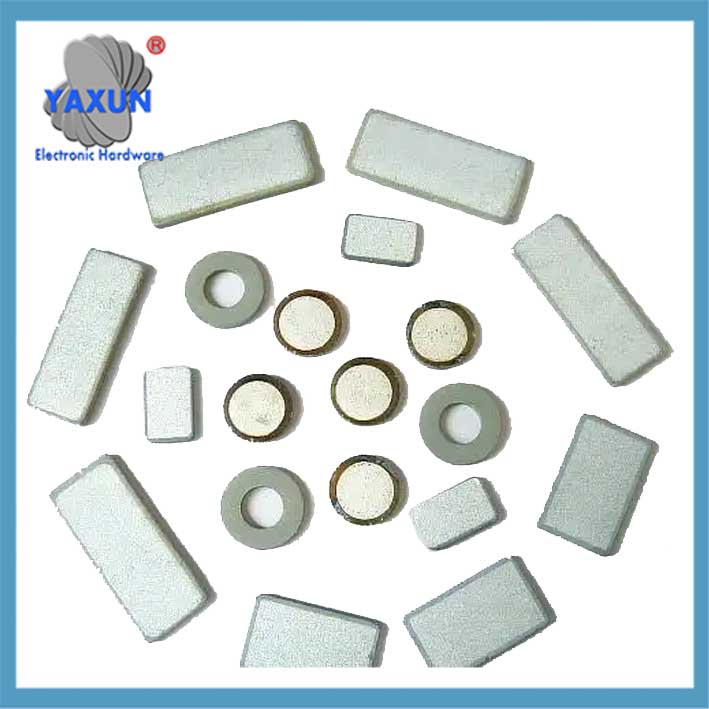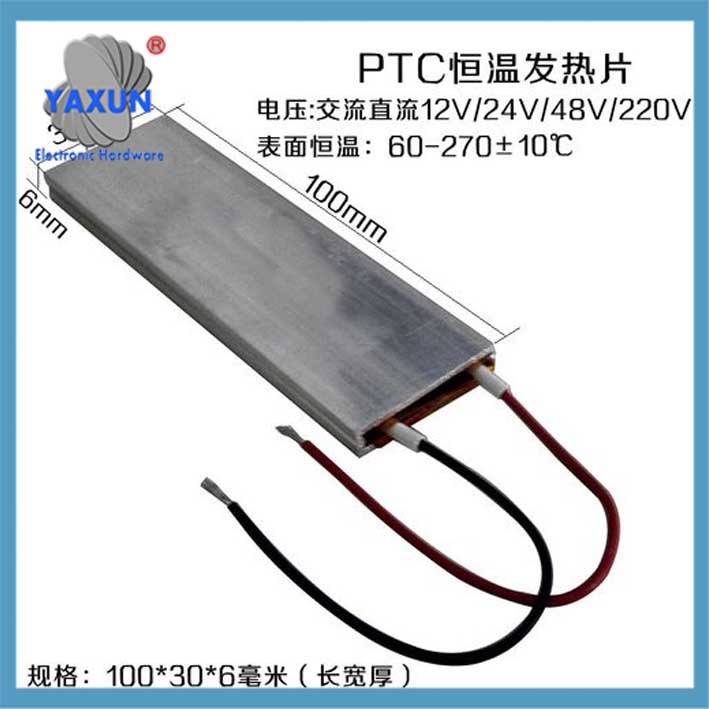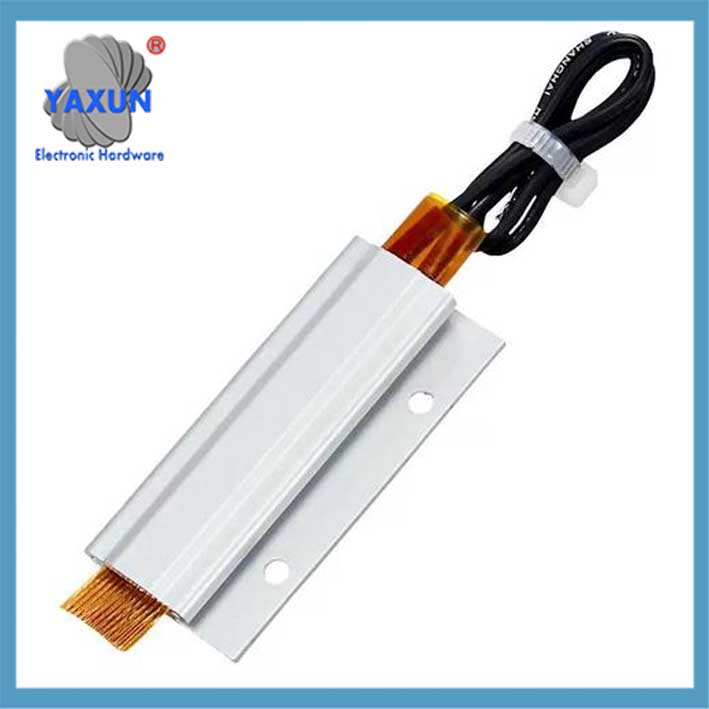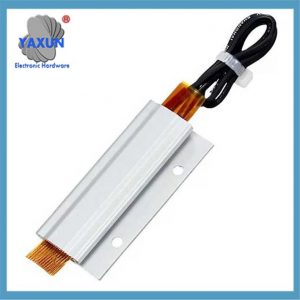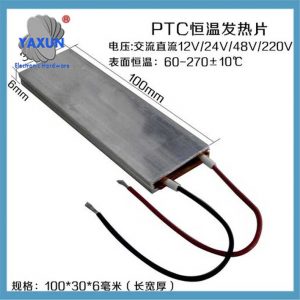Product Categories
Product Tags
Low-Voltage PTC Thermostatic Heater
PTC heaters are heating devices designed to utilize the constant-temperature heating characteristics of low-voltage PTC thermostatic heaters. In low- and medium-power heating applications, PTC heaters offer advantages unmatched by traditional heating elements, including constant temperature heating, no open flame, high heat conversion efficiency, minimal influence from power supply voltage, and a long lifespan. Their use in electric heating appliances is increasingly favored by R&D engineers.
Product Overview
Low-voltage PTC thermostatic heaters require only 3-24V voltage to maintain constant temperature heating. Their principle is that when power is applied, the PTC thermistor’s self-heating causes its resistance to enter the transition region, maintaining a constant surface temperature. This temperature is dependent solely on the PTC thermistor’s Curie temperature and the applied voltage, and is largely independent of the ambient temperature.
PTC heaters are heating devices designed to utilize the constant-temperature heating characteristics of low-voltage PTC thermostatic heaters. In low- and medium-power heating applications, PTC heaters offer advantages unmatched by traditional heating elements, including constant temperature heating, no open flame, high heat conversion efficiency, minimal influence from power supply voltage, and a long lifespan. Their use in electric heating appliances is increasingly favored by R&D engineers.
PTC thermistors for constant-temperature heating can be manufactured in a variety of shapes and specifications. Common shapes include discs, rectangles, strips, rings, and honeycomb structures. Combining these PTC heating elements with metal components can create various high-power PTC heaters. Note: High-power, low-voltage PTC thermostatic heaters have very high power requirements. For example, a 500W heater with a 12V supply draws a normal operating current of 500 ÷ 12 = 41.67A. Therefore, the power supply must be capable of supplying at least 50A.
Application Design
Utilizing the constant-temperature heating principle of PTC thermistors, applications include hair straighteners, hair clips, hair clips, ion perms, perms, perms, ceramic perms, hair tongs, curling irons, electric combs, negative ion hair curlers, massagers, mosquito repellents, mosquito coil dispensers, fragrance dispensers, perfume dispensers, hot melt glue guns, foot bath heating, thermos cups, water heaters, coffee makers, coffee warmers, coffee heaters, water dispensers, hot and cold water dispensers, milk heaters, shower heating, electric mosquito repellents, hand warmers, dryers, electric hot plates, electric irons, electric soldering irons, electric adhesives, hair curlers, showers, shoe dryers, shoe dryers, foot warmers, electric heating plates, spectrum analyzers, spectrum therapy, physical therapy devices, infrared heating, motorcycle carburetors, electric humidifiers, and moisture-proof heating for electrical instruments. Constant temperature incubators, electronic thermos bottles, insulated boxes, insulated cups, insulated trays, insulated cabinets, electric hot plates, thermotherapy devices, coffee makers, wax melters, steam generators, humidifiers, chocolate extruders, soldering irons, acupuncture equipment, urinary catheters, foot warmers, hand dryers, cotton candy machines, massagers, small warm air heaters, hair dryers, control cabinet heating and moisture-proofing systems, monitors, electric ovens, toaster ovens, IV drip kits, medical equipment, household appliances, small appliances, and more.
Low-voltage PTC heaters
Appearance and Structure
| Model | Rated Temperature Resistance 25℃/Ω |
Surface Temperature /℃ |
Rated Voltage /V |
Length L/mm |
Width W/mm |
Thickness T/mm |
| MZ9-L35W6T2.1V12T60 | 10~30 | 60±10 | 12 | 35 | 6 | 2.1 |
| MZ9-L35W6T2.1V12T70 | 10~30 | 70±10 | 12 | 35 | 6 | 2.1 |
| MZ9-L35W5T2.1V12T180 | 10~30 | 180±10 | 12 | 35 | 5 | 2.1 |
| MZ9-L35W5T2.1V12T240 | 10~30 | 240±10 | 12 | 35 | 5 | 2.1 |
| MZ9-L35W5T2.1V12T270 | 10~40 | 270±10 | 12 | 35 | 5 | 2.1 |
| MZ9-L24W15T1.15V12T120 | 2~12 | 120±10 | 12 | 24 | 15 | 1.15 |
| MZ9-L24W15T1.15V12T140 | 2~12 | 140±10 | 12 | 24 | 15 | 1.15 |
| MZ9-L24W15T1.15V12T180 | 2~12 | 180±10 | 12 | 24 | 15 | 1.15 |
| MZ9-Φ5T1.1V12T50 | 80~150 | 50±5 | 12 | Φ5 | 1.1 | |
| MZ9-Φ10T1.2V12T70 | 5~30 | 70±10 | 12 | Φ10 | 1.2 | |
| MZ9-Φ13T2.5V12T80 | 10~30 | 80±10 | 12 | Φ13 | 2.5 | |
| MZ9-Φ8T1.85V12T90 | 10~30 | 90±10 | 12 | Φ8 | 1.85 | |
| MZ9-Φ6T1.85V12T100 | 10~30 | 100±10 | 12 | Φ6 | 1.85 | |
| MZ9-Φ10T2.5V12T120 | 10~30 | 120±10 | 12 | Φ10 | 2.5 | |
| MZ9-Φ16T1.1V12T160 | 2~30 | 160±10 | 12 | Φ16 | 1.1 | |
| MZ9-Φ20T1.5V12T200 | 2~30 | 200±10 | 12 | Φ20 | 1.5 |
Temperatures can be designed between 50°C and 200°C, and operating voltages can be designed between 3V and 50V, depending on customer requirements.
Notes on Use
1) The PTC heater features automatic constant temperature control, eliminating the need for a temperature control system. It is the core component of all PTC heaters.
2) Four electrode types are available: electroless nickel + silver, melt-blown aluminum, printed aluminum + silver, and printed aluminum.
3) Unlike products designed for mains voltage, low-voltage products experience significant surface temperature fluctuations when the operating voltage fluctuates by more than 25%.
4) When multiple PTC heaters are used together, they should be connected in parallel, not in series.
5) This product does not have lead wires or insulation. If this is not feasible, please select a model with an external insulation film or a metal-cased model.
Low-Voltage Metal-Cased PTC Heater
Appearance and Structure
Notes on Use
1) The heating power decreases gradually after power is applied, eventually stabilizing. Stable power depends on operating conditions. The power of the same PTC heater can vary several times depending on the operating conditions. The faster the heat dissipation, the greater the stable power; the higher the PTC surface temperature, the higher the power.
2) The surface temperature of the PTC heater is controlled by the PTC itself and can be controlled by disconnecting the circuit, but it cannot be controlled by adjusting the voltage.
3) PTCs are inherently highly reliable and have a long lifespan, but improper assembly can cause power and temperature instability.
4) When using multiple PTCs, they should be connected in parallel, not in series.
We can design the temperature range from 50°C to 280°C and the operating voltage range from 3V to 50V according to customer requirements.
Contact Us
Waiting for your email, we will reply you within 12 hours with valuable information you needed.
 English
English Afrikaans
Afrikaans العربية
العربية বাংলা
বাংলা bosanski jezik
bosanski jezik Български
Български Català
Català 粤语
粤语 中文(简体)
中文(简体) 中文(漢字)
中文(漢字) Hrvatski
Hrvatski Čeština
Čeština Nederlands
Nederlands Eesti keel
Eesti keel Suomi
Suomi Français
Français Deutsch
Deutsch Ελληνικά
Ελληνικά हिन्दी; हिंदी
हिन्दी; हिंदी Magyar
Magyar Bahasa Indonesia
Bahasa Indonesia Italiano
Italiano 日本語
日本語 한국어
한국어 Latviešu valoda
Latviešu valoda Lietuvių kalba
Lietuvių kalba македонски јазик
македонски јазик Bahasa Melayu
Bahasa Melayu Norsk
Norsk پارسی
پارسی Polski
Polski Português
Português Română
Română Русский
Русский Cрпски језик
Cрпски језик Slovenčina
Slovenčina Slovenščina
Slovenščina Español
Español Svenska
Svenska ภาษาไทย
ภาษาไทย Türkçe
Türkçe Українська
Українська اردو
اردو Tiếng Việt
Tiếng Việt
